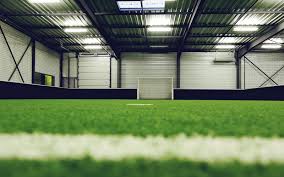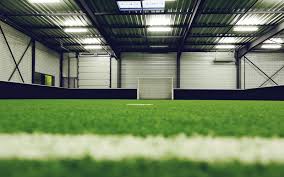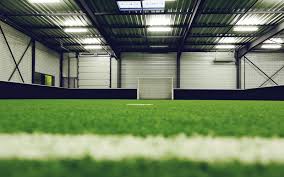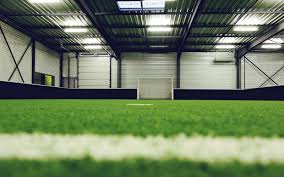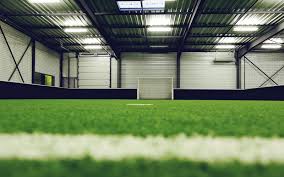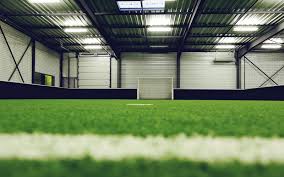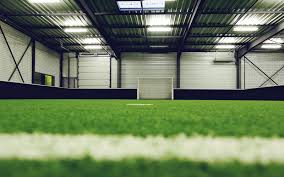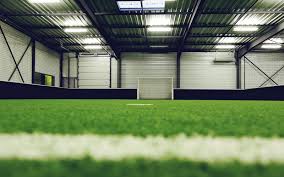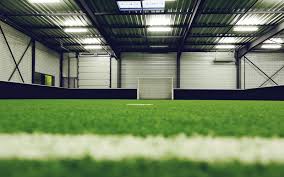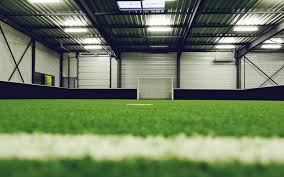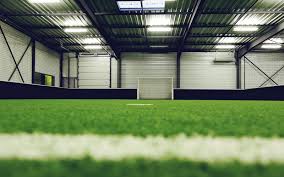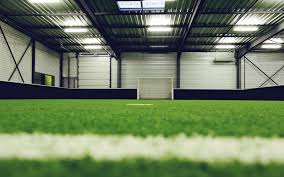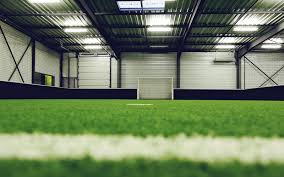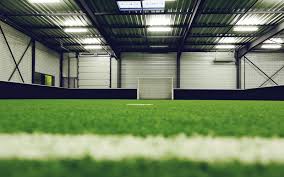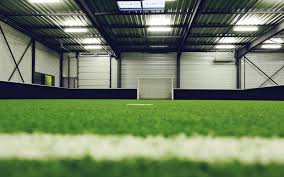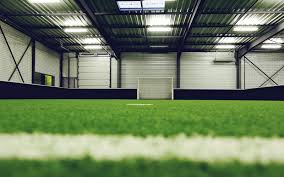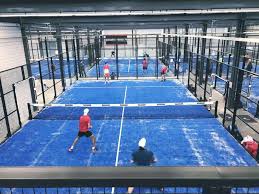Martial Arts Dojo Insurance: Essential Sports Facility Coverage for Combat Sports Venues
Operating a martial arts dojo, whether teaching karate, judo, taekwondo, Brazilian jiu-jitsu, or mixed martial arts, involves unique risks that standard business insurance policies often fail to address. From student injuries during sparring sessions to equipment damage and professional liability claims, dojo owners face a complex landscape of potential exposures that require specialized sports facility insurance.
The martial arts industry in the UK has experienced significant growth, with thousands of dojos serving communities across the country. However, this growth brings increased scrutiny from insurers and regulators, making comprehensive insurance coverage not just advisable but essential for sustainable operation. A single serious injury claim or property damage incident could financially devastate an uninsured or underinsured facility.
This guide examines the specific insurance needs of martial arts dojos, exploring the coverage types that protect both traditional and modern combat sports facilities, the unique risks facing different martial arts disciplines, and the practical steps dojo owners can take to secure appropriate protection whilst managing premium costs effectively.
Essential Insurance Coverage for Martial Arts Dojos
Public Liability Insurance
Public liability insurance forms the foundation of any martial arts dojo insurance programme. This coverage protects your facility against claims from students, visitors, or members of the public who suffer injury or property damage whilst on your premises or participating in your activities.
For martial arts facilities, public liability coverage must account for the inherently physical nature of training. Common claims include injuries from falls on training mats, collisions during sparring, injuries to spectators during demonstrations or competitions, and accidents in changing rooms or reception areas. Standard policies typically provide coverage from one million to ten million pounds, though many insurers recommend higher limits for facilities offering full-contact disciplines or hosting competitions.
The policy should extend beyond the physical dojo premises to cover off-site activities such as outdoor training sessions, demonstrations at community events, competitions at external venues, and promotional activities. Many dojos underestimate their exposure during these off-premises activities, only to discover coverage gaps when claims arise.
Employers Liability Insurance
If your dojo employs instructors, administrative staff, cleaners, or any other workers, employers liability insurance is legally required in the UK. This coverage protects against claims from employees who suffer injury or illness arising from their employment at your facility.
Martial arts instructors face particular occupational risks including repetitive strain injuries from demonstrating techniques, impact injuries from participating in training, and long-term joint problems from years of practice. The minimum legal coverage is five million pounds, though many policies provide ten million pounds as standard.
Employers liability extends to cover legal defense costs, compensation payments, and rehabilitation expenses. For dojos with multiple instructors or those operating across several locations, ensuring all staff are properly covered under a single policy or coordinated programme prevents dangerous gaps in protection.
Professional Indemnity Insurance
Professional indemnity insurance protects martial arts instructors and dojo owners against claims of professional negligence, inadequate instruction, or failure to properly supervise students. This coverage has become increasingly important as students and parents become more aware of their legal rights and more willing to pursue compensation for injuries they attribute to poor instruction or supervision.
Claims might arise from allegations that an instructor taught techniques incorrectly, leading to injury; failed to properly assess a student's fitness level before allowing participation in advanced training; inadequately supervised sparring sessions, resulting in preventable injuries; or provided advice that led to injury or financial loss.
Professional indemnity policies typically cover legal defense costs, settlements, and compensation awards. Coverage limits commonly range from one million to five million pounds, with higher limits advisable for larger facilities or those offering instructor certification programmes.
Contents and Equipment Insurance
Martial arts dojos require specialized equipment that represents significant financial investment. Contents insurance protects training mats, punching bags and striking equipment, protective gear including headguards and body protectors, weapons used in traditional martial arts training, mirrors and wall padding, reception and office equipment, and changing room facilities.
Standard contents policies may not adequately cover specialized martial arts equipment or may impose restrictions on coverage for items used in contact sports. Ensure your policy specifically lists and values all equipment, with replacement cost coverage rather than actual cash value to avoid depreciation disputes following claims.
Equipment insurance should also cover theft, which poses a significant risk for dojos, particularly for portable items like protective gear and weapons. Many facilities have experienced break-ins targeting valuable equipment, making robust security measures and appropriate insurance coverage essential.
Buildings Insurance
If you own your dojo premises, buildings insurance protects the physical structure against fire, flood, storm damage, vandalism, and other perils. Even if you lease your facility, you may be contractually responsible for certain building elements or improvements you have made, making some level of buildings coverage necessary.
Martial arts training can cause unusual wear and tear on buildings, including wall damage from impact training, floor damage from heavy equipment, and structural stress from suspended punching bags. Ensure your insurer understands the building's use and that the policy adequately covers these specific risks.
Business Interruption Insurance
Business interruption insurance provides crucial financial protection if your dojo must temporarily close due to insured damage to your premises or equipment. This coverage replaces lost income during the closure period and covers ongoing expenses such as rent, utilities, and staff wages that continue despite the interruption.
For martial arts facilities operating on tight margins, even a brief closure can create severe financial strain. Business interruption insurance provides the financial breathing room needed to repair damage, relocate temporarily if necessary, and maintain your business until normal operations resume.
The policy should include adequate indemnity periods, typically 12 to 24 months, to cover extended closures following serious incidents. Some policies also offer coverage for loss of income due to denial of access to your premises, such as when authorities close surrounding areas following an incident nearby.
Insurance Considerations for Different Martial Arts Disciplines
Traditional Martial Arts
Traditional disciplines including karate, taekwondo, kung fu, and aikido typically involve structured training with emphasis on forms, controlled sparring, and respect for safety protocols. Insurance for these dojos generally focuses on student injuries from falls, strikes during controlled sparring, and injuries from weapon training where applicable.
Traditional martial arts facilities often serve children and families, requiring particular attention to safeguarding policies and child protection measures. Insurers increasingly scrutinize facilities serving minors, requiring evidence of proper instructor qualifications, background checks, and supervision protocols.
Grappling Arts
Judo, Brazilian jiu-jitsu, wrestling, and other grappling disciplines present distinct risks including joint injuries from submissions and locks, mat burns and skin infections, neck and spine injuries from throws, and concussions from takedowns. Insurance for grappling-focused dojos must specifically address these risks, which differ significantly from striking-based martial arts.
Grappling arts also raise hygiene concerns, as close physical contact and mat work increase infection transmission risks. Insurers may require evidence of robust cleaning protocols and hygiene policies as a condition of coverage.
Full-Contact and Combat Sports
Mixed martial arts, Muay Thai, boxing, and kickboxing facilities face the highest insurance premiums due to elevated injury risks. These disciplines involve intentional striking with significant force, increasing the likelihood of concussions, fractures, and other serious injuries.
Insurers providing coverage for full-contact facilities typically require evidence of proper safety equipment usage, medical screening of participants, qualified instructors with appropriate certifications, and clear policies regarding sparring intensity and protective equipment requirements. Some insurers exclude coverage for certain activities or impose sub-limits on claims arising from full-contact training.
Weapons-Based Martial Arts
Disciplines incorporating weapons training, such as kendo, kobudo, kali, and certain kung fu styles, require specialized insurance addressing the unique risks of training with swords, staffs, nunchaku, and other implements. Injuries from weapons training can be severe, and insurers carefully assess safety protocols before providing coverage.
Policies should specifically include weapons training, as some insurers exclude this activity or require additional premiums. Ensure your insurer understands that training weapons are typically blunted or padded, and provide evidence of safety protocols governing weapons storage, handling, and use.
Risk Management Strategies for Martial Arts Dojos
Student Screening and Medical Disclosure
Implementing thorough student screening processes reduces injury risks and demonstrates due diligence to insurers. Require all students to complete medical disclosure forms identifying pre-existing conditions, injuries, or health concerns that might affect their training. Obtain parental consent for minors and ensure parents disclose relevant medical information.
Medical screening helps instructors tailor training to individual capabilities and limitations, reducing injury likelihood. It also provides crucial documentation should claims arise, demonstrating that the dojo took reasonable precautions and was aware of relevant health factors.
Proper Instructor Qualifications
Ensuring all instructors hold appropriate qualifications from recognized martial arts governing bodies strengthens your insurance position and reduces liability exposure. Insurers increasingly require evidence of instructor credentials, and claims involving unqualified instructors may result in coverage disputes or denial.
Maintain current records of all instructor certifications, first aid qualifications, safeguarding training, and continuing professional development. Many governing bodies require ongoing training to maintain instructor status, and allowing certifications to lapse creates both insurance and legal vulnerabilities.
Equipment Maintenance and Safety Protocols
Regular inspection and maintenance of training equipment prevents injuries and demonstrates responsible facility management. Establish documented inspection schedules for mats, checking for tears, proper securing, and adequate cushioning; striking equipment, ensuring secure mounting and appropriate condition; protective gear, replacing worn or damaged items promptly; and facility infrastructure, including flooring, lighting, and ventilation.
Documentation of maintenance activities provides valuable evidence in defending claims and may result in premium reductions from insurers who recognize proactive risk management.
Clear Rules and Supervision
Establishing and enforcing clear rules regarding sparring intensity, protective equipment requirements, prohibited techniques, and supervision requirements creates a safer training environment and strengthens your legal position should claims arise. Ensure rules are communicated clearly to all students, posted visibly in training areas, and consistently enforced.
Adequate supervision is crucial, particularly during sparring and advanced training. Maintain appropriate instructor-to-student ratios, with more intensive supervision for children, beginners, and full-contact activities. Never leave students unsupervised during training, and ensure instructors actively monitor all activities rather than simply being present in the facility.
Waivers and Documentation
Whilst liability waivers do not eliminate legal liability in the UK, they demonstrate that students understood and accepted the inherent risks of martial arts training. Well-drafted waivers can discourage frivolous claims and provide useful evidence in defending legitimate claims.
Waivers should clearly explain the risks associated with martial arts training, confirm that the student is medically fit to participate, acknowledge that the student has received safety instruction, and confirm understanding of facility rules and expectations. Have waivers reviewed by a solicitor familiar with sports law to ensure they are appropriately worded and enforceable.
Maintain detailed records of all incidents, injuries, and near-misses. Incident reports should document what occurred, who was involved, what immediate actions were taken, and any follow-up required. This documentation proves invaluable when defending claims and identifying patterns that require corrective action.
Factors Affecting Martial Arts Dojo Insurance Costs
Discipline and Contact Level
The martial arts discipline you teach significantly impacts insurance premiums. Traditional, non-contact or light-contact disciplines typically attract lower premiums, whilst full-contact combat sports command higher rates due to elevated injury risks. Mixed martial arts facilities often face the highest premiums, sometimes two to three times higher than traditional martial arts dojos.
Student Demographics
Facilities serving primarily children and families generally receive more favorable premium rates than those focusing on adult full-contact training. However, working with children requires additional safeguarding measures and appropriate child protection policies, which insurers will scrutinize carefully.
Claims History
Your claims history profoundly affects insurance costs. Facilities with clean claims records benefit from lower premiums and better coverage terms, whilst those with frequent or serious claims face premium increases and may struggle to obtain coverage. Implementing robust risk management to prevent claims provides both safety and financial benefits.
Facility Size and Student Numbers
Larger facilities with more students face greater exposure and typically pay higher premiums, though economies of scale mean per-student costs often decrease as facilities grow. Be honest about student numbers when obtaining quotes, as underreporting can result in coverage disputes or denial of claims.
Security and Safety Measures
Demonstrating strong security and safety measures can reduce premiums. Insurers look favorably upon facilities with alarm systems and CCTV, regular equipment maintenance programmes, qualified instructors with current certifications, documented safety protocols and incident reporting, and appropriate first aid equipment and trained first aiders on site.
Selecting the Right Insurance for Your Martial Arts Dojo
Specialist Sports Facility Insurers
Working with insurers who specialize in sports facilities and martial arts dojos ensures you receive appropriate coverage from professionals who understand your specific risks. Specialist insurers are more likely to offer tailored policies, competitive premiums for your risk profile, and knowledgeable claims handling when issues arise.
Avoid general business insurance policies that may not adequately address martial arts-specific risks or may contain exclusions that leave you dangerously exposed. Always disclose the full nature of your activities to ensure your policy responds when needed.
Coverage Adequacy
Whilst cost is important, adequate coverage limits should be your primary concern. Insufficient coverage can prove catastrophic if serious claims exceed your policy limits. Consider the potential costs of serious injury claims, which can easily reach hundreds of thousands of pounds, legal defense costs, which accumulate rapidly even for unsuccessful claims, and business interruption losses if your facility must close temporarily.
Many brokers recommend public liability coverage of at least five million pounds for martial arts facilities, with higher limits for larger dojos or those offering full-contact disciplines.
Policy Exclusions and Conditions
Carefully review policy exclusions and conditions to understand what is not covered. Common exclusions that may affect martial arts dojos include professional competitions unless specifically included, instruction by unqualified individuals, activities outside those disclosed to the insurer, and failure to maintain required safety standards.
Ensure you understand and can comply with all policy conditions, as breach of conditions can result in coverage denial. If certain conditions seem unreasonable or difficult to meet, discuss alternatives with your broker before binding coverage.
Protecting Your Martial Arts Dojo's Future
Comprehensive insurance coverage represents a fundamental investment in your martial arts dojo's sustainability and long-term success. By understanding the unique risks facing martial arts facilities and implementing robust insurance and risk management strategies, you protect not just your financial interests, but the safety and trust of your students and the broader martial arts community.
The martial arts landscape in the UK continues to evolve, with increasing professionalization, growing participation across age groups, and heightened awareness of safety and liability. Dojos that prioritize comprehensive insurance coverage, proactive risk management, and student safety will be best positioned to thrive in this dynamic environment.
Remember that insurance is more than a legal requirement or financial protection—it's a commitment to your students, your instructors, and the martial arts discipline you've dedicated your life to preserving and teaching. Each policy represents a promise of responsible operation, professional standards, and a dedication to creating a safe, supportive training environment.
Final Recommendations for Martial Arts Dojo Owners
- Conduct an annual comprehensive review of your insurance coverage
- Stay updated with changes in martial arts regulations and insurance requirements
- Invest in ongoing staff training and safety protocols
- Maintain meticulous documentation of all training activities, incidents, and safety measures
- Work with insurance brokers who specialize in sports and martial arts facilities


 0330 127 2333
0330 127 2333
